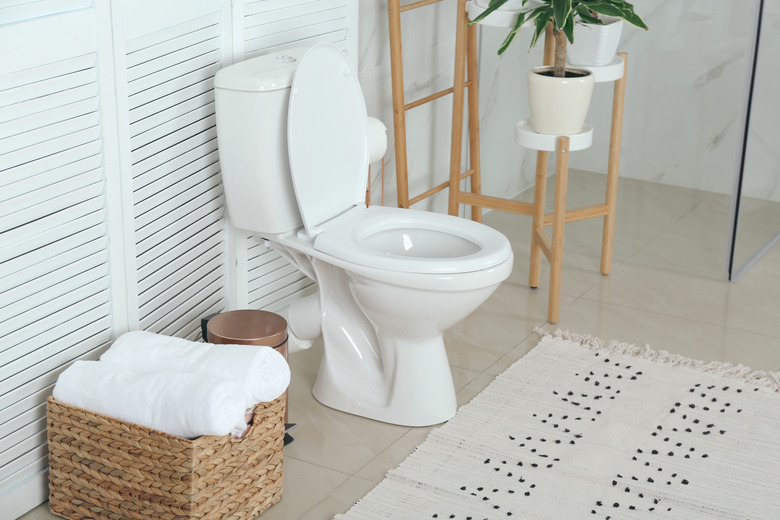Glue For A Porcelain Toilet That Broke When Tightening The Bolts
When you tighten the nuts onto the closet bolts that hold the base of a toilet secure, avoid over tightening or you can easily crack the porcelain toilet. It might not seem as bad as a crack to another toilet part, such as the tank, but it still can lead to leaking.
If the toilet base is not too damaged, you may be able glue it back together, but before you can do that, you'll probably have to widen the crack. Without doing that, there's no way to get the glue where you need it to go. Prepare for disappointment, because the porcelain could shatter into small pieces, and if that happens, you'll need to replace the toilet. Don't feel bad...that's what you probably should do anyway, because replacing a cracked toilet is safer than gluing it.
Fix It With Two-Part Epoxy
One appropriate adhesive choice for the cracked toilet base is two-part epoxy. Epoxy is a thermosetting resin that, mixed with a hardener, forms a tough bond that will keep the break sealed up. It will also be resistant to water, which is an obvious concern around a toilet. To ensure the epoxy that bonds with porcelain, follow the specific instructions included by the manufacturer.
Wipe all debris and water off the toilet base using a clean, dry rag. Thoroughly stir and mix the epoxy, according to the instructions, apply generous amounts to both sides of the crack, join them and apply duct tape to hold them together while the glue sets.
Polyurethane Glue as an Alternative
Polyurethane glue is an additional choice that will create a strong bond for the broken toilet base. One difference between polyurethane glue and epoxy is that the toilet surface can be a little wet when you apply the polyurethane glue. Another difference is that polyurethane glue expands as it sets, so it's even more important to tape the pieces together. The glue will ooze out of the crack as it expands, so use a utility knife to cut off the excess when it sets completely.
Don't Use Silicone Caulk
Although you might initially consider silicone caulk to seal the broken toilet base, it won't provide the long-term success that epoxy and polyurethane glue provide. The advantage of epoxy is the bonding strength it provides. Yes, silicone caulk might both provide an adhesive seal against water leaking through the crack, but there will be no strong bond for the broken base. With the amount of heavy use that toilets endure, the crack will reoccur and possibly lead to a leak from underneath the fixture.
Some Potential Problems
If the broken toilet base is not properly glued back together, when the base shifts under a user's weight, or when the toilet is otherwise moved due to the broken base, the seal created by the wax ring can easily be broken also. This allows both water and sewer gases into the room. The water can damage the flooring around the toilet, and the sewer gases can cause physical ailments, such as dizziness. If this happens, it really is time to forget about gluing and replace the toilet.
